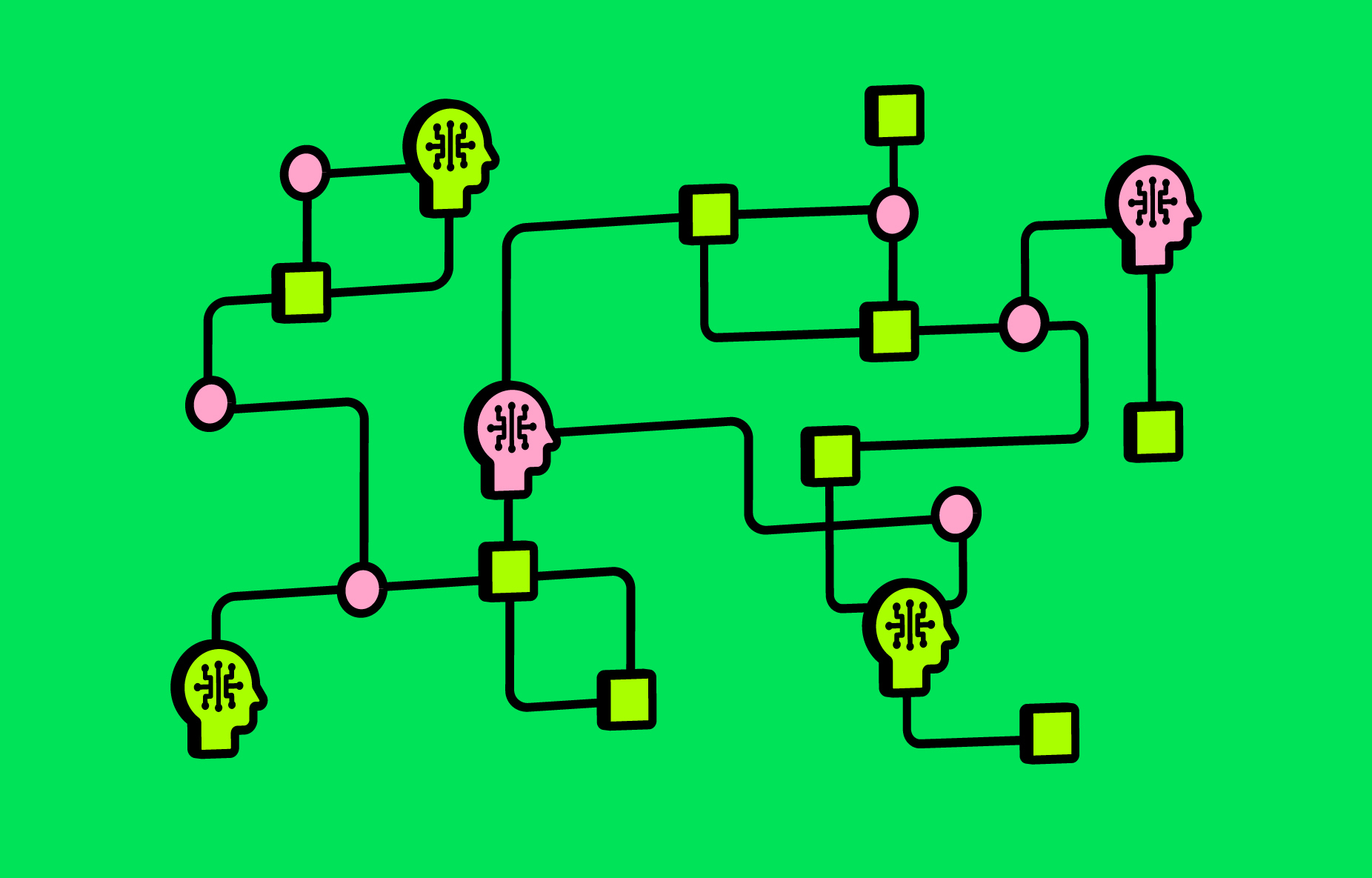AI is everywhere. From sales to customer service to analytics, it has the power to drive critical business decisions. But there’s still a lot we don’t know about how AI works behind its user-facing interface. As the technology becomes more mainstream, leaders are becoming increasingly concerned about a persistent lack of transparency around what data AI models can access, and how. Adopting blockchain technology allows organizations to ensure their AI systems are using the right data and working within their designated parameters.
The current solutions available to organizations to improve AI transparency can be complex and resource-intensive. Building owned databases, establishing clear documentation and user feedback mechanisms, creating ethical guidelines for data collection, and investing in explainable AI—which gives models the ability to express why they reached a specific decision or prediction—all require an in-depth understanding of the organization, their data, and their users. Starting from scratch can cost hundreds of millions of dollars in time and labor. Given the AI-tech industry’s existing talent shortage, it’s an especially pressing challenge.
For businesses looking to build transparency and trust into their AI tools, blockchain technology is a practical, effective solution for training and scaling their models. It poses incredibly powerful benefits for AI, mitigating security breaches, improving accountability, and enhancing the quality of data inputs.
Breaking open the black box
The quality of any AI system is dependent on the quality of its training data—the training process is what builds the very foundation of an AI model. But today, much of this learning happens in a black box. Decisions are being made by opaque algorithms offering little to no insight into their internal processes.
Blockchain has the ability to radically increase visibility into AI, and ensure fair operation. Thanks to its inherently decentralized nature, blockchain technology maintains transparency while allowing many different entities to use (or train) an AI model at the same time – all in a tamper-proof database that clearly logs what happened during the training process, and when.
Blockchain technology also enables federated learning for AI, a privacy-preserving technique that makes information-sharing possible without any disclosure of raw data. By operating on consensus mechanisms, it provides a secure platform for multiple participants to agree on the validity and correctness of AI decision-making.
This gives businesses a huge advantage by mitigating risks associated with biases or single points of failure. Traditional AI models are often built and controlled by highly centralized and opaque entities, leaving room for bias to be inadvertently introduced or intentionally propagated. Information-sharing among a larger group of entities via blockchain technology can prevent discriminatory and/or misleading outcomes by improving the AI model with more robust, diverse, and transparent training data. Auditable decentralized governance also ensures that no single entity has undue influence, reducing the risk of biased decision-making.
Building better AI models with blockchain technology
Integrating blockchain technology is the most effective way to ensure data integrity and transparency within AI models. It opens a window into how AI operates, illustrating the rationale behind specific business decisions.
Unpacking how a model works enables companies to proactively identify and investigate potential biases in their system. For example, an AI-driven demand forecasting tool for a product may struggle to predict accurately if it only has access to limited historical sales data. Some errors can also be attributed to feature selection and engineering. Take the average credit risk assessment model—the way it’s programmed to prioritize relevant financial and personal information can have a significant effect on prediction accuracy.
Because each transaction or data update recorded on the blockchain network is verifiable, blockchain technology can prevent these systemic shortcomings by “fact checking” an auditable trail of AI-driven processes. This auditability enhances accountability as companies can identify factors that influenced a particular decision.
The potential of AI models going rogue is also top of mind for leaders as the technology continues to advance in decision-making complexity. Companies need their AI systems and tools to operate in accordance with operational regulations and requirements. By creating an auditable, tamper-resistant trail of AI-enabled workflows, blockchain technology can help companies pinpoint and rein in any inappropriate AI activity.
Storing data on an immutable, decentralized ledger means that blockchain technology can serve as an arbiter of AI-driven workflows and, in effect, ensure data integrity, security, and transparency. With blockchain technology in place, unauthorized data tampering can become a thing of the past. It equips companies with the ability to facilitate safer and more effective AI implementation.


